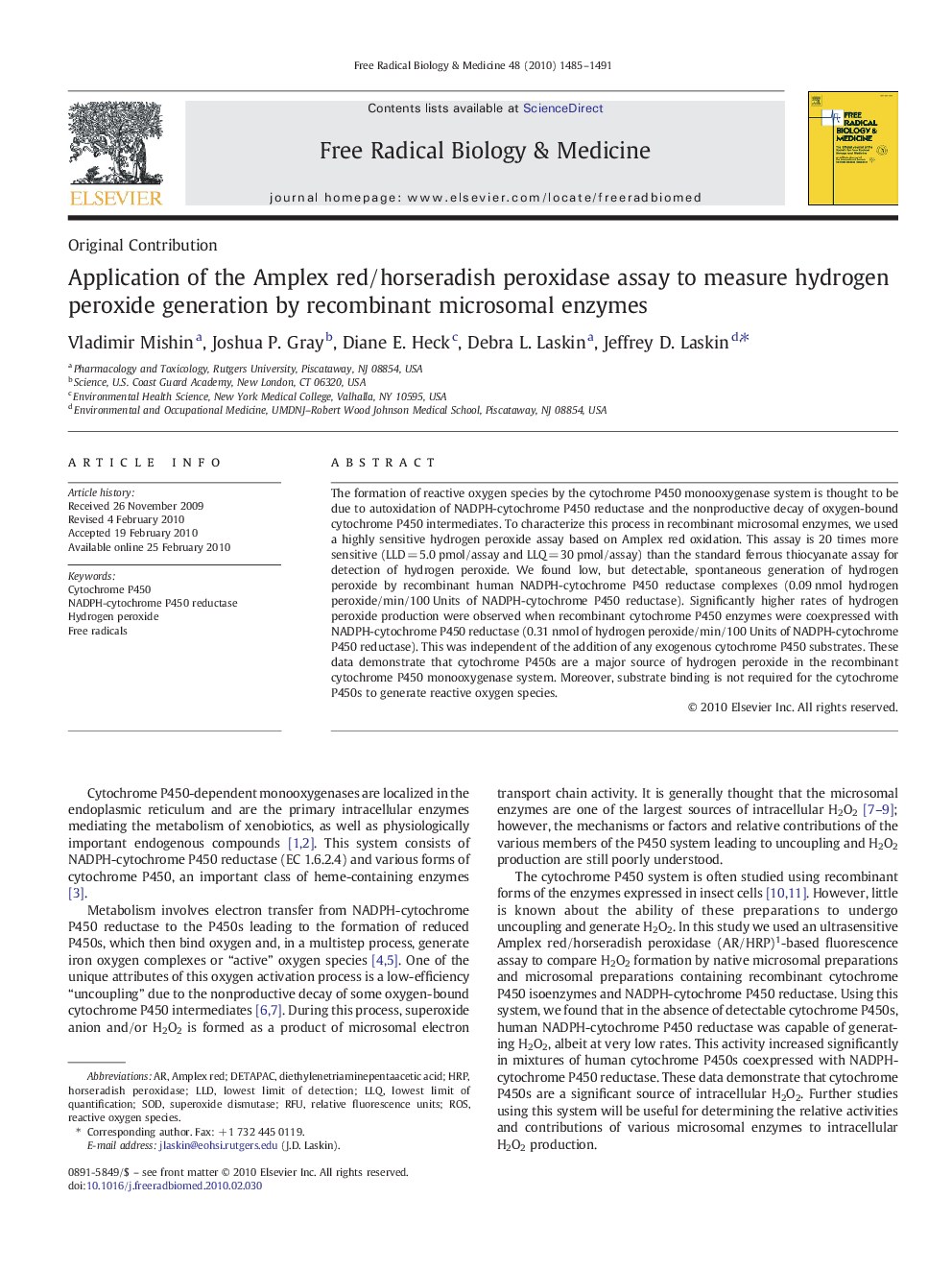| Article ID | Journal | Published Year | Pages | File Type |
|---|---|---|---|---|
| 1909705 | Free Radical Biology and Medicine | 2010 | 7 Pages |
The formation of reactive oxygen species by the cytochrome P450 monooxygenase system is thought to be due to autoxidation of NADPH-cytochrome P450 reductase and the nonproductive decay of oxygen-bound cytochrome P450 intermediates. To characterize this process in recombinant microsomal enzymes, we used a highly sensitive hydrogen peroxide assay based on Amplex red oxidation. This assay is 20 times more sensitive (LLD = 5.0 pmol/assay and LLQ = 30 pmol/assay) than the standard ferrous thiocyanate assay for detection of hydrogen peroxide. We found low, but detectable, spontaneous generation of hydrogen peroxide by recombinant human NADPH-cytochrome P450 reductase complexes (0.09 nmol hydrogen peroxide/min/100 Units of NADPH-cytochrome P450 reductase). Significantly higher rates of hydrogen peroxide production were observed when recombinant cytochrome P450 enzymes were coexpressed with NADPH-cytochrome P450 reductase (0.31 nmol of hydrogen peroxide/min/100 Units of NADPH-cytochrome P450 reductase). This was independent of the addition of any exogenous cytochrome P450 substrates. These data demonstrate that cytochrome P450s are a major source of hydrogen peroxide in the recombinant cytochrome P450 monooxygenase system. Moreover, substrate binding is not required for the cytochrome P450s to generate reactive oxygen species.
